Disclosure: This article contains affiliate links. We may earn a commission from purchases at no extra cost to you, which helps our travel content.
Having explored over 30 countries with my husband and daughter, I've developed a knack for finding experiences that bridge modern convenience with cultural authenticity. Seoul, South Korea's vibrant capital, masters this balance beautifully. During our autumn visit last year, the city revealed itself as a fascinating tapestry where centuries-old palaces stand in the shadow of futuristic skyscrapers, and where traditional hanbok-clad visitors capture selfies on the latest smartphones. Whether you're planning your first Asian adventure or returning to this dynamic peninsula, these 10 experiences will help couples connect with Korean culture in meaningful, memorable ways.
1. Palace Hopping in Traditional Hanbok
Our Seoul adventure began at Gyeongbokgung Palace, the largest of the city's five grand palaces from the Joseon Dynasty. While impressive on its own, the experience transformed when we rented traditional hanbok attire from a nearby shop. These vibrant, flowing traditional Korean garments not only provided stunning photo opportunities against the ancient architecture but also granted us free entry to all palace grounds!
The autumn foliage created a magical backdrop as we wandered through Changdeokgung Palace and its Secret Garden, a UNESCO World Heritage site where royal family members once sought respite. My daughter was particularly enchanted by Deoksugung Palace, where the changing of the royal guard ceremony happens three times daily (except Mondays).
Wearing hanbok while palace-hopping connects you to centuries of Korean history in a tangible way. We rented our outfits for a full day, allowing us to visit multiple palaces without rushing. The wireless earbuds proved invaluable for listening to audio guides while keeping our hands free to manage the flowing hanbok sleeves!
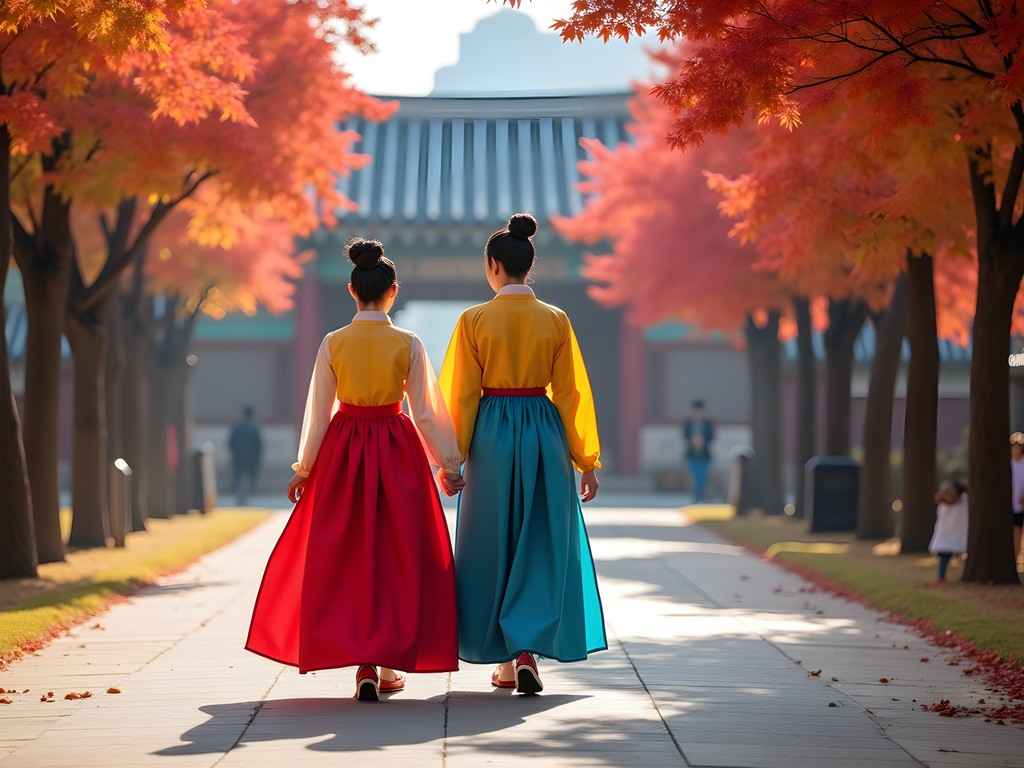
💡 Pro Tips
- Book hanbok rentals online in advance for better prices and selection
- Visit Gyeongbokgung first thing in the morning to avoid crowds
- Most palaces are closed on Mondays, so plan accordingly
2. Temple Stay Experience at Jogyesa
For couples seeking deeper cultural immersion, I cannot recommend a temple stay highly enough. Jogyesa Temple, headquarters of Korean Buddhism and conveniently located in central Seoul, offers an accessible yet authentic program. During our overnight stay, we participated in evening chanting ceremonies, practiced meditation at dawn, and shared simple vegetarian temple food with monks.
The experience provided a rare glimpse into Korean Buddhist traditions and offered a peaceful counterpoint to Seoul's urban energy. My background in conservation work made me appreciate the sustainable practices integrated into temple life – from mindful consumption to the careful tending of the ancient trees in the courtyard.
While most temple stays require advance booking, Jogyesa offers both overnight programs and shorter half-day cultural experiences perfect for travelers with limited time. Pack light but bring a meditation cushion if sitting on hard floors for extended periods is challenging for you.
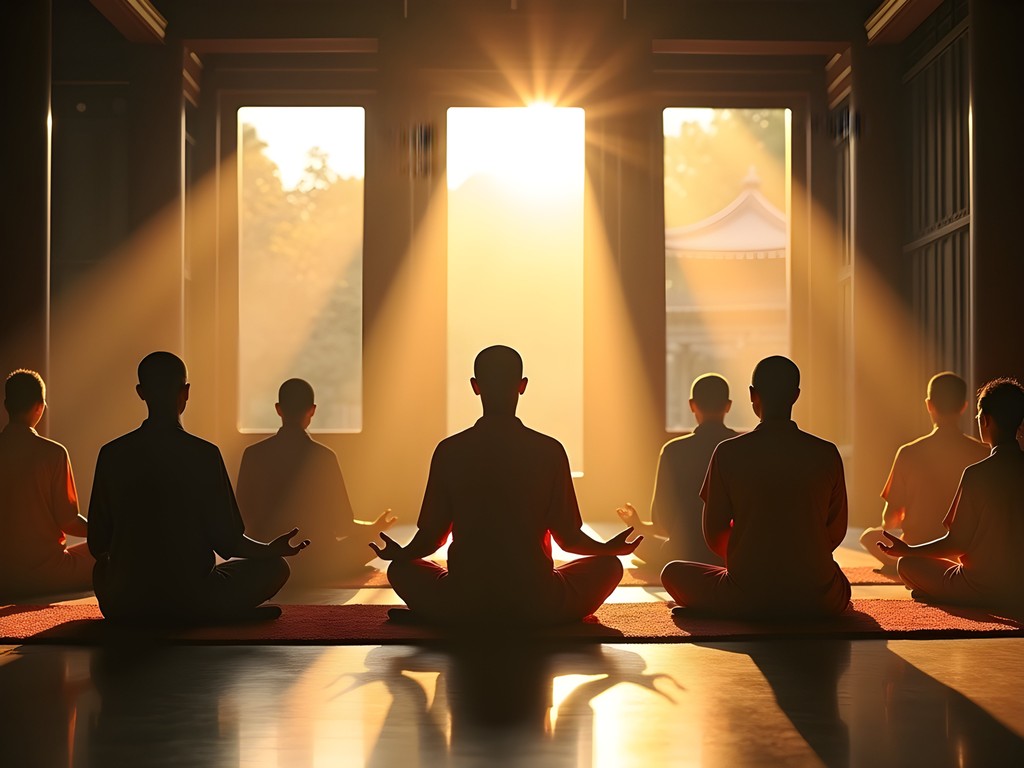
💡 Pro Tips
- Book at least 2-3 weeks in advance through the official Templestay website
- Respect the early wake-up calls (typically 4:30am) for morning meditation
- Bring modest, comfortable clothing that covers shoulders and knees
3. Navigating Korean Culinary Traditions in Gwangjang Market
My husband and I have always believed that to truly understand a culture, you must taste it. Gwangjang Market, Seoul's oldest traditional market, provides the perfect culinary classroom. Unlike the more tourist-oriented Namdaemun Market, Gwangjang remains primarily frequented by locals, making it an authentic food experience.
The market's narrow alleyways burst with color, aroma, and the enthusiastic calls of vendors. We spent an entire evening hopping between food stalls, sampling bindaetteok (mung bean pancakes), various types of tteokbokki (spicy rice cakes), and the famous mayak gimbap (seaweed rice rolls so addictive they're nicknamed 'drug gimbap').
The true highlight was watching the makkoli ladies – older women who've perfected the art of serving this milky rice wine alongside perfectly paired side dishes. Don't miss trying soondae (blood sausage) if you're adventurous! I found the Korean phrase book invaluable for communicating with vendors who speak limited English.
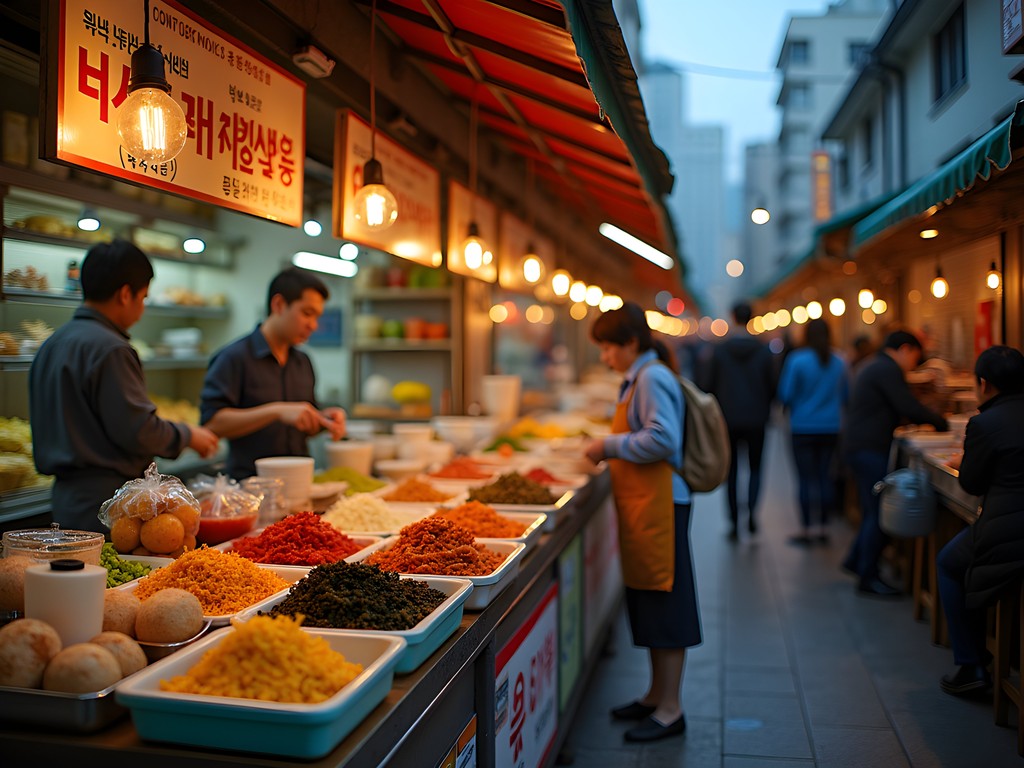
💡 Pro Tips
- Visit around 6-7pm when the market is lively but before the evening rush
- Look for stalls with queues of locals – they invariably serve the best food
- Bring cash as many vendors don't accept cards
4. Traditional Craft Workshops in Insadong
Insadong has long been Seoul's cultural heart, and while parts have become touristy, authentic experiences still abound if you know where to look. My daughter and I spent a memorable afternoon learning traditional crafts in this historic district.
Our favorite experience was a hanji paper-making workshop, where we created beautiful handmade paper using techniques passed down through generations. The master artisan explained how hanji, made from mulberry bark, has been integral to Korean culture for over 1,500 years – used for everything from royal documents to household items.
Nearby, we participated in a traditional dojang (personal seal) carving class, creating personalized stamps with our names in Hangul characters. The instructor helped us understand the cultural significance of these seals, historically used as signatures on important documents.
For couples seeking a unique date activity, I recommend the couples' pottery workshop at Clayarch, where you can create matching moon jars or tea sets under expert guidance. The travel neck wallet kept our workshop confirmations and payments secure while leaving our hands free for crafting.

💡 Pro Tips
- Book workshops at least one day in advance through Visit Korea website or your hotel concierge
- Allow 2-3 hours for most craft workshops to fully enjoy the experience
- Many workshops offer shipping services if your creations need time to dry or fire
5. Tea Culture Experience in a Traditional Hanok
Having grown up with my Indian father's tea rituals, I've always been fascinated by tea cultures worldwide. In Seoul, the Bukchon Hanok Village offers an exceptional opportunity to experience traditional Korean tea ceremony in authentic hanok houses – traditional Korean homes with distinctive curved roofs and courtyard gardens.
We visited Tea Therapy, a serene tea house in a beautifully preserved hanok, where we participated in a formal Korean tea ceremony called darye. Our host, dressed in hanbok, demonstrated the precise movements and explained the philosophical principles behind the ceremony – mindfulness, respect for nature, and finding beauty in simplicity.
The experience included tasting several traditional Korean teas, from medicinal ssanghwa-cha to refreshing yujacha (citron tea). The ceremony concluded with traditional rice cakes that perfectly complemented the subtle tea flavors.
Afterward, we explored the surrounding hanok village, where narrow alleyways reveal glimpses into traditional Korean architecture. I found the insulated water bottle perfect for carrying hot tea while wandering through the neighborhood on the crisp autumn day.
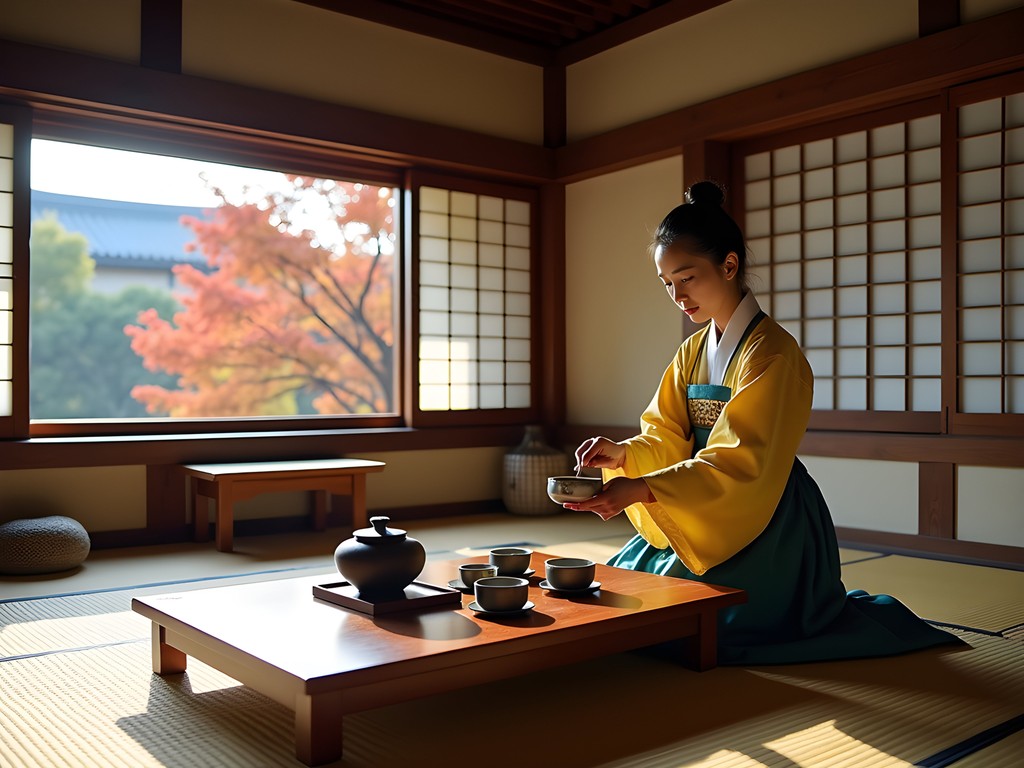
💡 Pro Tips
- Make reservations for tea ceremonies, especially on weekends
- Visit Bukchon early morning or late afternoon to avoid tour groups
- Remove shoes before entering traditional tea houses
6. Night Tour of Changdeokgung Palace
Most visitors see Seoul's grand palaces during daylight hours, but the limited night tours of Changdeokgung Palace offer a truly magical perspective. These special evening programs, available only during certain seasons including autumn, allow visitors to experience the palace grounds illuminated by traditional lanterns and subtle lighting that accentuates the architecture's elegant lines.
Our guide led us through moonlit courtyards while sharing stories of royal intrigue and historical significance that brought the ancient stones to life. The autumn night air carried the scent of pine and distant incense as we wandered paths once walked by kings and queens.
The limited capacity of these tours creates an intimate atmosphere entirely different from the daytime experience. The Secret Garden, in particular, transforms into an enchanted landscape under the night sky. I found my compact tripod essential for capturing long-exposure night photographs without blur.
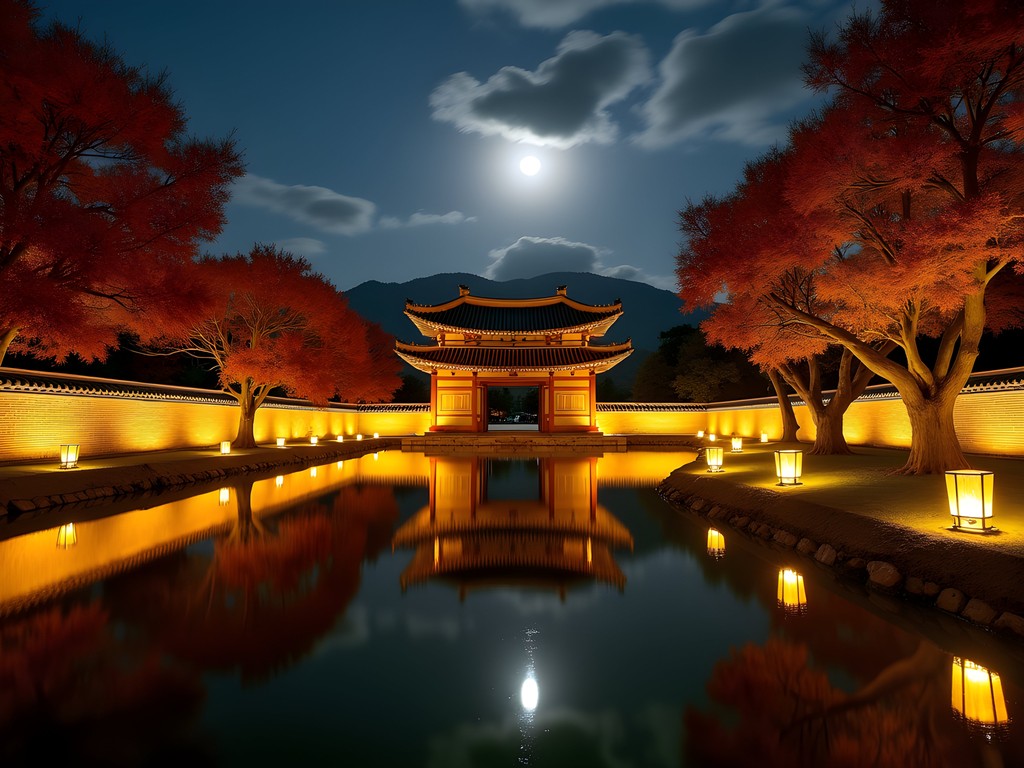
💡 Pro Tips
- Book night tour tickets as soon as they become available (usually 1-2 months in advance)
- Bring layers as autumn evenings can be chilly
- Consider bringing a small flashlight for navigating darker areas of the grounds
7. Contemporary Korean Culture in Hongdae
To truly understand modern Seoul, couples must venture beyond historical sites to where contemporary Korean culture thrives. Hongdae, the vibrant district surrounding Hongik University, pulses with creative energy that showcases Korea's modern cultural innovations.
By day, we explored independent galleries featuring emerging Korean artists and boutiques selling designs from local fashion graduates. Street performers entertained crowds with everything from traditional samulnori drumming to K-pop dance routines that my daughter couldn't resist joining.
As evening approached, the area transformed with neon lights illuminating quirky themed cafés. We spent a delightful hour at a raccoon café where these curious creatures interacted with visitors while we sipped elaborately decorated lattes. Later, we discovered a hidden speakeasy serving creative soju cocktails infused with traditional Korean ingredients like omija berries and yuzu.
For couples seeking memorable date experiences, Hongdae offers endless options from VR gaming centers to private karaoke rooms (noraebang) where you can channel your inner K-pop star. The portable phone charger proved essential for keeping our phones powered through long days of photography and navigation.

💡 Pro Tips
- Visit on weekend afternoons to see the best street performances
- Look for hidden venues in basement levels or upper floors of buildings
- Try the free sampling stations at Olive Young beauty stores for Korean skincare products
8. Traditional Korean Cooking Class for Couples
My husband and I have always found cooking classes to be one of the most rewarding travel experiences – not only do you learn about local cuisine, but you gain skills to recreate those flavors back home. In Seoul, we joined a couples' cooking class at O'ngo Food Communications in the Jongno district.
Our instructor, Mrs. Kim, welcomed us into a traditional kitchen setting and guided us through preparing classic Korean dishes: bulgogi (marinated beef), japchae (sweet potato noodles), and kimchi (fermented cabbage). She explained the philosophy behind Korean cuisine – the importance of balancing five colors and five flavors in meals, reflecting traditional Korean medicine principles.
The hands-on experience taught us techniques that no cookbook could adequately convey, like the precise knife skills for julienning vegetables and the proper fermentation process for authentic kimchi. The class concluded with us enjoying our creations alongside traditional rice wine.
I particularly appreciated how Mrs. Kim adapted recipes for different dietary requirements in our group. The Korean cooking essentials kit has become one of our favorite souvenirs, allowing us to recreate authentic Korean stone pot bibimbap at home.
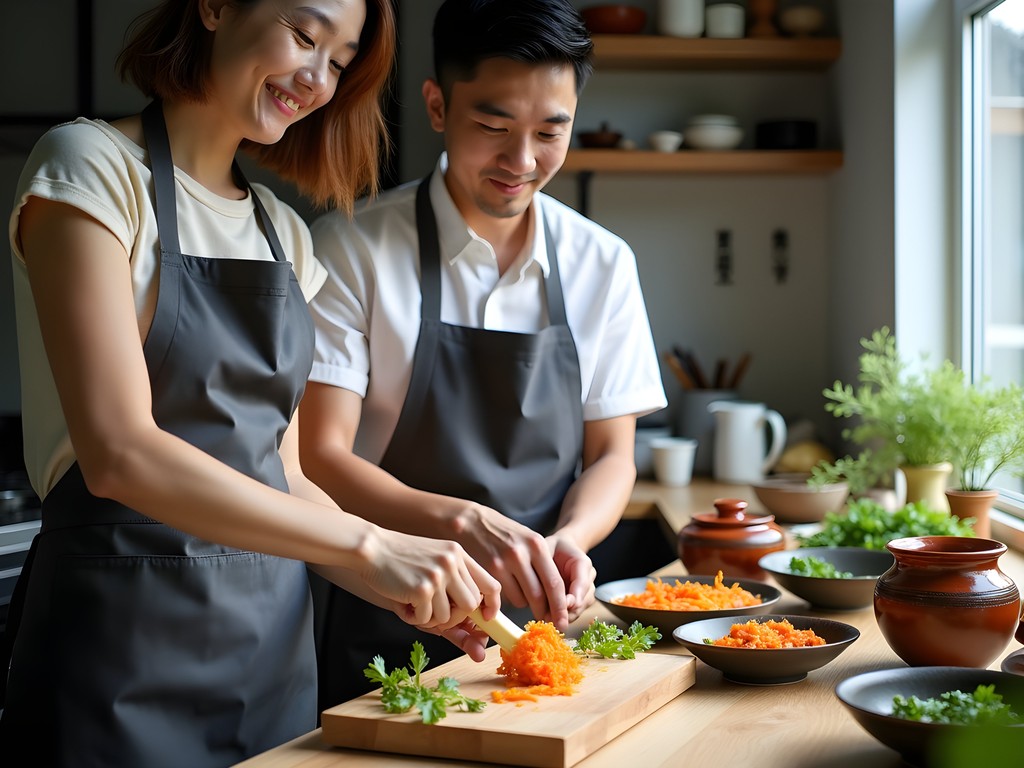
💡 Pro Tips
- Choose a class that includes a market tour for the full experience
- Book classes that offer vegetarian options if needed
- Take photos of each cooking stage to help remember techniques
9. Traditional Performance at the Korea House
For an evening of refined cultural immersion, the Korea House in central Seoul offers spectacular traditional performances in an authentic setting. The venue, modeled after historical Korean palace architecture, creates the perfect atmosphere for experiencing traditional arts.
We attended a performance that combined several Korean art forms: the haunting melodies of gayageum (12-string zither), the precise movements of traditional dance, and the captivating storytelling of pansori (Korean opera). The performers wore exquisite hanbok costumes, with sleeves that seemed to float through the air during dance sequences.
What made the experience particularly special was the intimate venue size, allowing us to appreciate subtle expressions and techniques that would be lost in larger theaters. Before the performance, we enjoyed a royal Korean banquet served on beautiful brass tableware, with dozens of small dishes representing different regions and traditions.
For couples seeking a sophisticated date night, this combination of traditional cuisine and performance creates a memorable evening. The foldable travel slippers came in handy as many traditional venues require removing shoes, and these pack easily in a day bag.
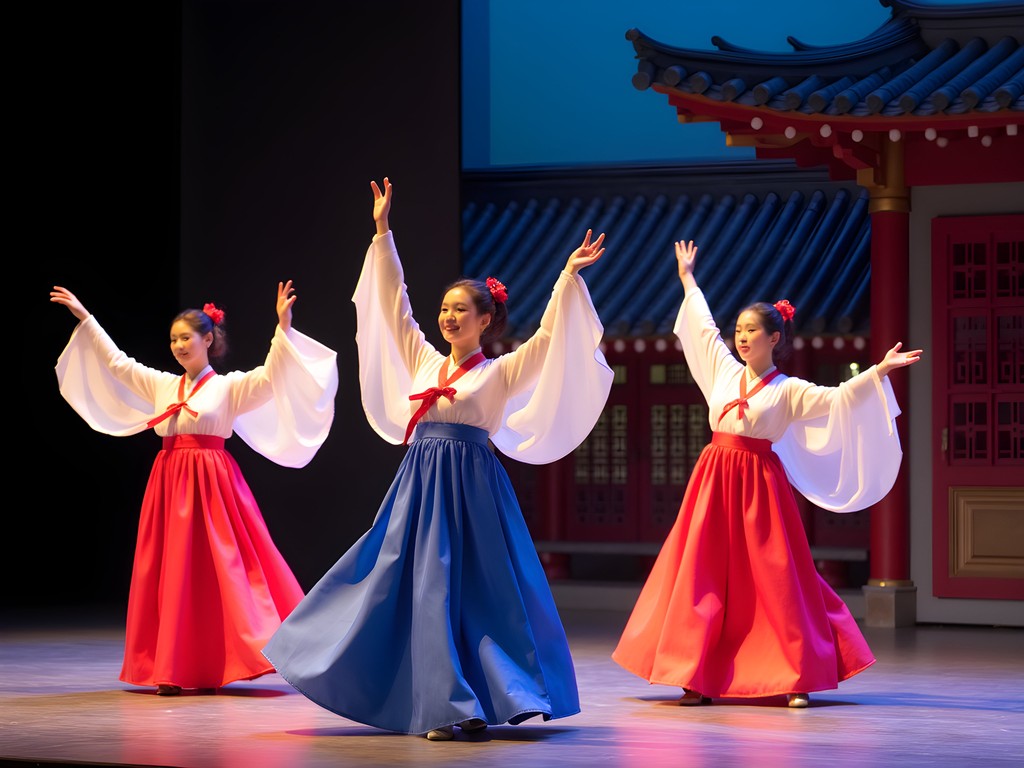
💡 Pro Tips
- Book the combined dinner and performance package for the full experience
- Arrive 30 minutes early to explore the traditional architecture
- Check the schedule as performances rotate seasonally
10. Dawn Visit to Jogyesa Temple's Morning Ceremony
For early risers willing to venture out before sunrise, Jogyesa Temple offers one of Seoul's most authentic spiritual experiences. Unlike the temple stay program, the morning ceremony is open to respectful visitors without reservation.
We arrived at the temple at 4:30am as monks began their day with the haunting sounds of the dharma drum and enormous bronze bell. The rhythmic chanting that followed created a meditative atmosphere as first light gradually illuminated the temple's colorful dancheong paintwork and paper lanterns.
Visitors are welcome to observe from designated areas or participate by following the lead of regular practitioners. The ceremony concludes with a walking meditation around the main hall, creating a moving meditation as the city awakens around the temple grounds.
Afterward, we joined locals at a nearby traditional breakfast place for hot bowls of rice porridge (juk) – the perfect warming meal after an early morning spiritual experience. My silk sleep mask helped me catch a few extra hours of sleep in our hotel afterward, essential after such an early start!
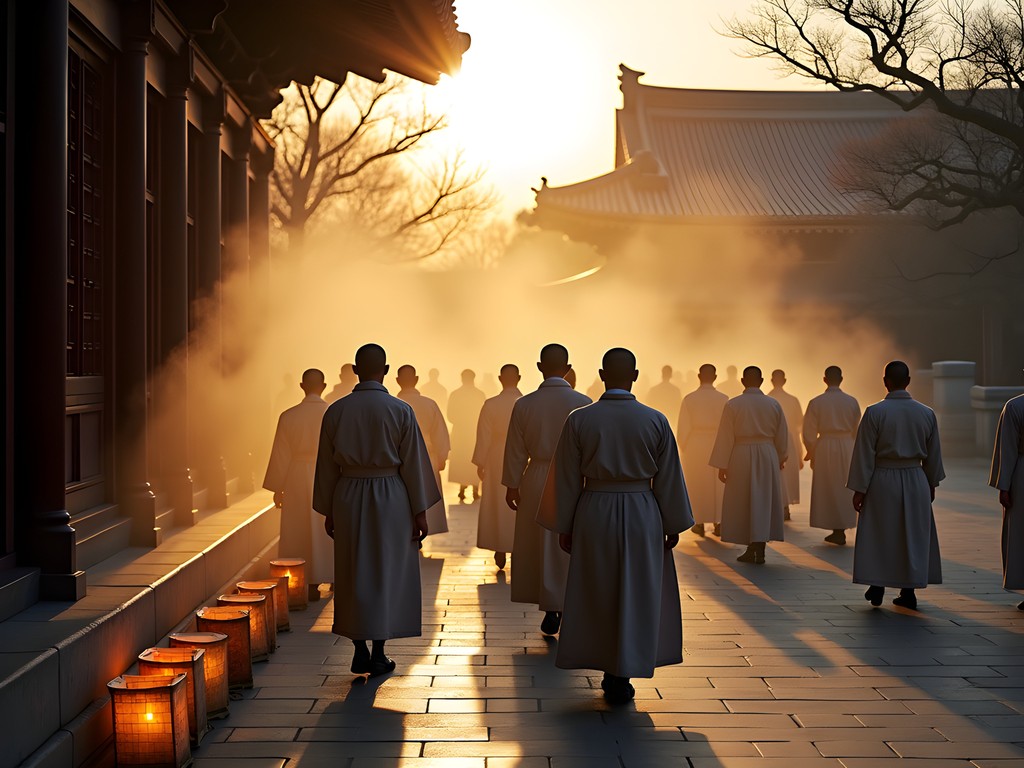
💡 Pro Tips
- Arrive by 4:15am to witness the entire ceremony
- Dress modestly with shoulders and knees covered
- Maintain silence and follow the lead of regular attendees
Final Thoughts
Seoul's magic lies in its seamless blend of ancient traditions and cutting-edge innovations. In a single day, you can witness thousand-year-old ceremonies at dawn, craft traditional paper by midday, and dance to K-pop under neon lights by evening. This cultural duality creates a perfect destination for couples seeking both depth and excitement.
What struck me most during our autumn visit was how accessible these authentic experiences are, despite the language barrier. Koreans take immense pride in sharing their cultural heritage, creating thoughtfully designed programs that welcome international visitors while maintaining authenticity.
As you plan your Seoul adventure, I encourage you to balance your itinerary between historical sites and contemporary cultural experiences. Allow time for spontaneous discoveries – some of our most memorable moments came from following lantern-lit alleyways or accepting a local's recommendation for a hidden tea house.
Whether you're sipping traditional tea in a 600-year-old hanok or creating your own K-pop music video in a high-tech studio, Seoul offers countless ways to connect with Korean culture – and with each other. What authentic experiences will you discover in this fascinating city where past and future dance together so gracefully?
✨ Key Takeaways
- Book palace night tours and temple stays well in advance
- Balance historical sites with contemporary cultural districts
- Participate in hands-on workshops to create meaningful souvenirs
- Try authentic Korean cuisine beyond the familiar barbecue restaurants
- Wake up early for spiritual experiences without the crowds
📋 Practical Information
Best Time to Visit
September-November (autumn) for comfortable temperatures and colorful foliage
Budget Estimate
$100-150 per day per person including mid-range accommodation, meals, and activities
Recommended Duration
5-7 days to experience both traditional and modern Seoul
Difficulty Level
Easy With Excellent Public Transportation And English Signage In Tourist Areas

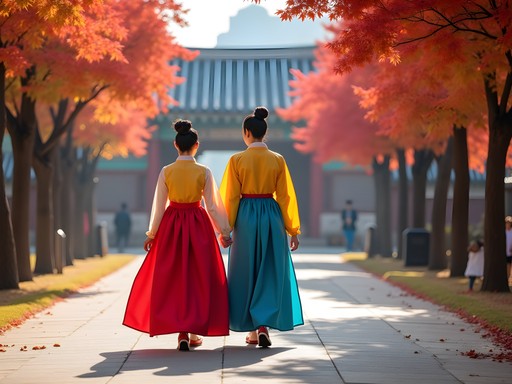

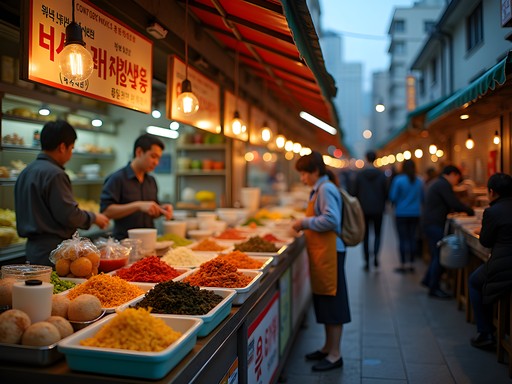
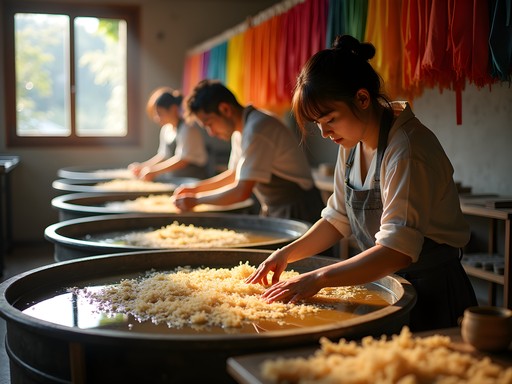
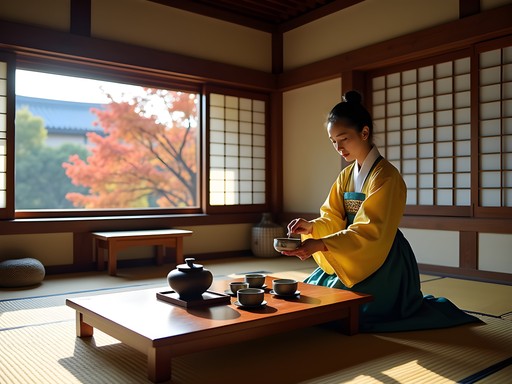




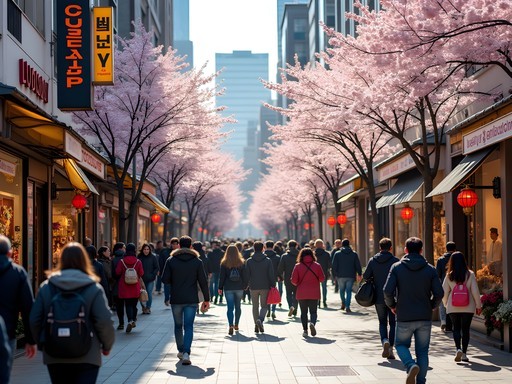
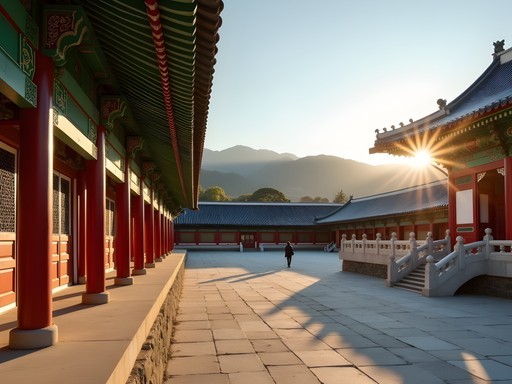
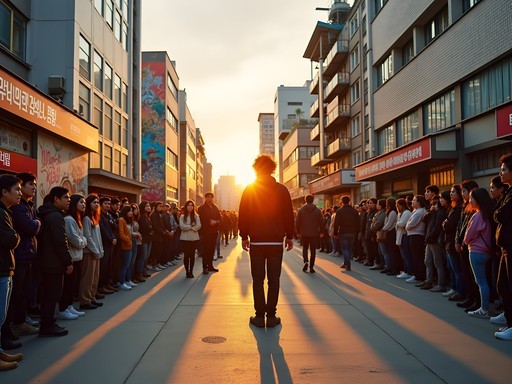
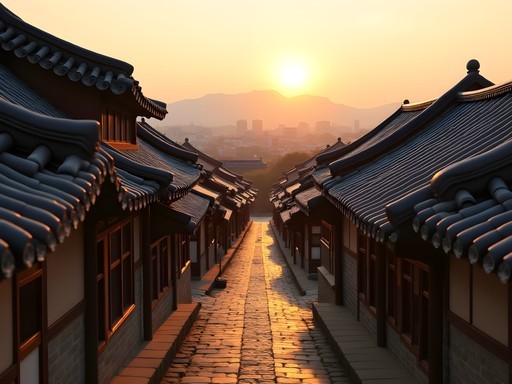
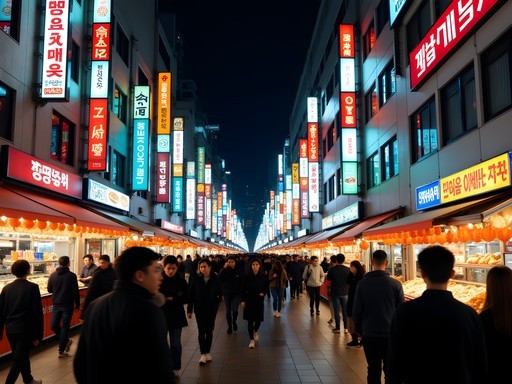


Comments
summertime
Just got back from Seoul last month and your Gwangjang Market recommendations were spot on! The bindaetteok (mung bean pancakes) were AMAZING. We also tried the live octopus which was... an experience 😅 One tip I'd add - the Seoul Metro app made getting around super easy, and we used T-money cards for everything from subway to convenience stores. Also, we found Namdaemun Market less touristy than Myeongdong for shopping. Did you check out any of the jimjilbangs (Korean spas)? That was a highlight for us!
beachking5773
Live octopus?! You're braver than me!
summertime
It wasn't as scary as it sounds! They cut it into small pieces and it just wiggles a bit. The sensation is weird but the taste is mild. When in Rome... or Seoul I guess! 😂
Timothy Jenkins
Brilliant post, Priya! I did the temple stay at Jogyesa last year and it was truly transformative. For anyone considering it, bring comfortable clothes that cover your knees and shoulders. The 4:30am meditation was challenging but worth it! I'd also add Bukchon Hanok Village to this list - wandering those traditional alleyways early morning before the tourist crowds arrive gives you a glimpse into old Seoul that perfectly complements the modern city experience. I used my pocket translator which was invaluable for chatting with local residents and shop owners in the less touristy areas.
beachking5773
Was the temple stay hard to book? Thinking about doing it next month but worried about my zero Korean skills lol
Timothy Jenkins
Not difficult at all! Most temple stays have English-speaking staff or volunteers. Just book through the official Templestay website about 2-3 weeks in advance. They're very accommodating to international visitors.
beachking5773
Those hanbok photos at Gyeongbokgung are giving me life! Did you rent them nearby?
summertime
Not the author but when I went, there were tons of rental shops right across from the palace. Super convenient!
Timothy Jenkins
The rental shops near Gyeongbokgung are indeed excellent. I'd recommend going early in the morning to avoid crowds - the lighting is better for photos too. Many places offer free storage for your regular clothes while you wear the hanbok.
CulturalNomad
That temple stay sounds incredible! Adding to my bucket list.
luckyway8282
Gwangjang Market food stalls are THE BEST! That bindaetteok (mung bean pancake) changed my life lol
Priya Hughes
Totally agree! I still dream about those pancakes. Did you try the mayak gimbap too?
luckyway8282
YES! Those little seaweed rolls are so addictive - now I understand why they're called 'drug' gimbap! 😂
Megan Martin
Priya, this is exactly the kind of cultural immersion I look for when traveling for business. I often extend my work trips by a few days, and your guide is perfect for making the most of limited time. I attended a traditional tea ceremony in Insadong last quarter after a conference and it was the highlight of my trip. For business travelers with just one free day, I'd recommend focusing on either the palace-hanbok experience or the craft workshops in Insadong - both offer excellent cultural insights without requiring a full day commitment. The T-Money card for public transportation is absolutely essential - saved me so much time getting between meetings and sightseeing spots.
Priya Hughes
Thanks for adding those business traveler insights, Megan! The T-Money card is definitely a must. And I love your suggestion about the tea ceremony - we did that too and it was such a peaceful break from the city's energy.
globeninja
The temple stay sounds amazing! I'm planning a solo trip and looking for authentic experiences. Did you need to book the Jogyesa temple stay far in advance? Also, I've been using the Lonely Planet Seoul to plan but wondering if there are better resources for finding these authentic experiences.
oceantime
Just booked our flights to Seoul after reading this! Can't wait to try all the street food at Gwangjang Market. Has anyone tried those live octopus dishes? Not sure if I'm brave enough!
globeninja
I tried it last year! It's definitely an experience - the sensation of the tentacles still moving is wild. Start with something more approachable like tteokbokki (rice cakes) or hotteok (sweet pancakes) if you're nervous!
sunnyphotographer8925
Your daughter looks like she's having such a great time in the craft workshop photos! Did she enjoy the temple stay too? We're planning to bring our kids (7 and 9) and wondering if it's suitable for them.
Priya Hughes
She actually loved the temple stay! At first I was worried about the early wake-up and meditation sessions, but the monks were so patient with her. They have special activities for children like lantern making. Just prepare them for the early morning schedule and simple vegetarian meals. Your 7 and 9 year olds should do fine!
adventurebuddy
Just got back from Seoul and followed so many of these recommendations! The craft workshops in Insadong were amazing - I made traditional hanji paper and a cool pendant. One thing I'd add: the T-Money card was super helpful for getting around. Seoul's subway is incredible but can be overwhelming at first. I used travel guide which had great neighborhood maps that helped me navigate between all these cultural spots. Gwangjang Market was the highlight - tried all the bindaetteok and tteokbokki I could handle!
FirstTimeAsia
How was the language barrier? Could you get by with just English?
adventurebuddy
Surprisingly manageable! All subway signs are in English, most young people speak some English, and at tourist spots it's no problem. I learned basic phrases which helped a lot in markets. Food places often have picture menus too!
Venture X
Premium card with 2X miles, $300 travel credit, Priority Pass